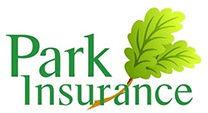With the summer rapidly approaching, chances are you’re planning to get a lot more use out of your horsebox over the coming months. Whether you’re moving your horse to a new field or stable for the summer, taking it on holiday, or competing in local or national events, it’s important to make sure that your horsebox is properly prepared and that you’ve got all the bases covered. To help you, here are five checks that you should make to ensure that your horsebox is ready for the summer.
1. Check the floor – As with any heavy load, a horse is a lot for vehicle to carry and it’s important to ensure that the floor of your horsebox is in a good condition and is entirely safe. Jim Green, Watch Manager of the Fire and Rescue Service in Hampshire, told Horse & Rider UK recently, “Reports of floors giving way while horses are in transit are not uncommon and can result in serious injury. Remember, your horse’s safety depends on you.”
Horsebox floors can suffer from rust and other conditions caused by moisture and aging, and it’s particularly important to check the structural integrity of the floor is intact after it’s been sitting unused for a long period of time.
2. Check the tyres – After a long winter, it’s quite likely that you’re the tyres of your horsebox will have lost a substantial amount of pressure, so take the time to ensure that they’re fully inflated to the correct pressure.
3. Check the brakes – After a long period of being stationary, parts of the vehicle can seize up and stop working properly, particularly if the vehicle has been kept outside or in otherwise damp or cold conditions. Be sure to check both the handbrake and the foot brakes before loading your horse into the vehicle.
4. Doors and couplings – Before you even think about putting your horse in the vehicle, you should thoroughly check that the rear doors open and close correctly and without difficulty. Failure to do so could result in a situation in which you are unable to get your horse out of the horsebox due to a seized locking mechanism, or worse, that the door swings open while in transit. If you have a horsebox trailer you should also check that the vehicle to trailer couplings are in good working order. You can find out more about the various mechanical checks you should carry out in the Government’s online leaflet, ‘A guide for horsebox and trailer owners’.
5. Check that you’ve got suitable horsebox insurance – After a period of not using your horsebox it may be hard to remember the exact dates and terms of your horsebox insurance. Therefore you should dig out your insurance documents and give it a good look over before you go out for a drive. Valid vehicle insurance is of course a legal necessity, but you may also want to consider if there are any optional extras that may be of benefit to you.
One particular policy addition that might come in very useful if you’ve got an older vehicle that you use infrequently is a breakdown cover policy which covers you not just for recovery of the vehicle, but also stabling for your horse and nearby accommodation for yourself.
If you’d like some advice on your horsebox insurance policy or you’re looking for a better deal than the one that you’ve got presently, get in touch with Park Insurance, experts in horsebox and equine insurance.

